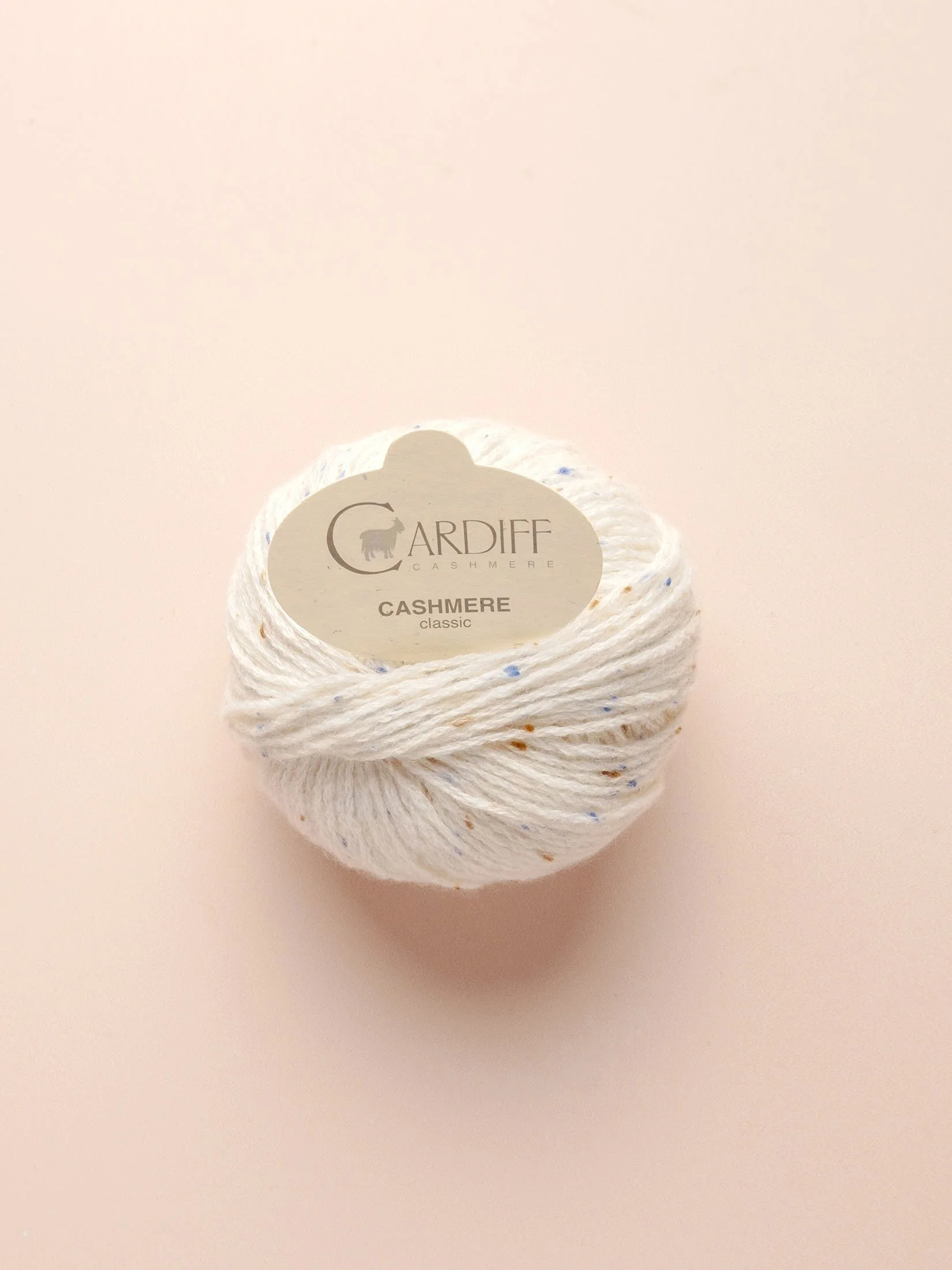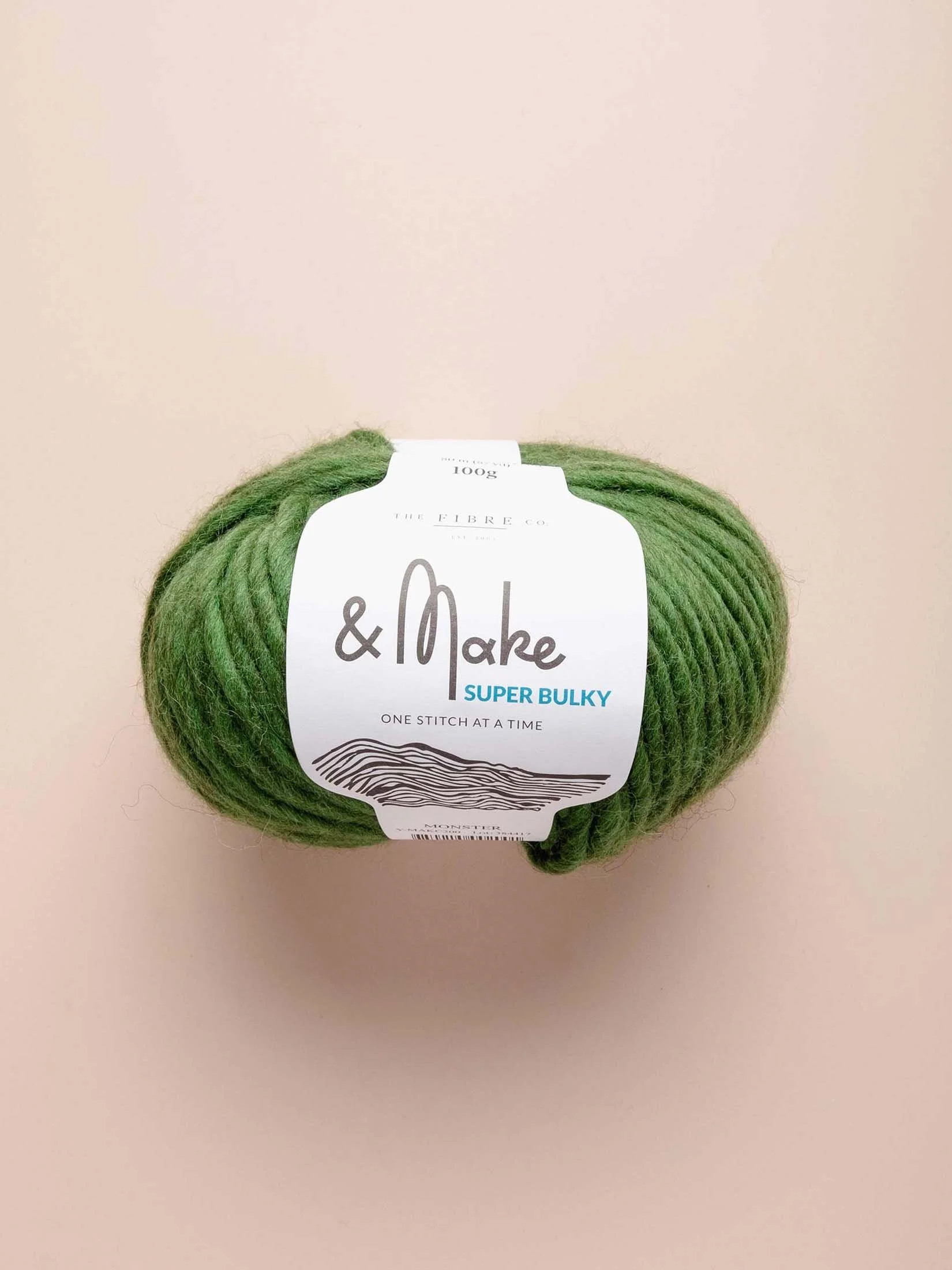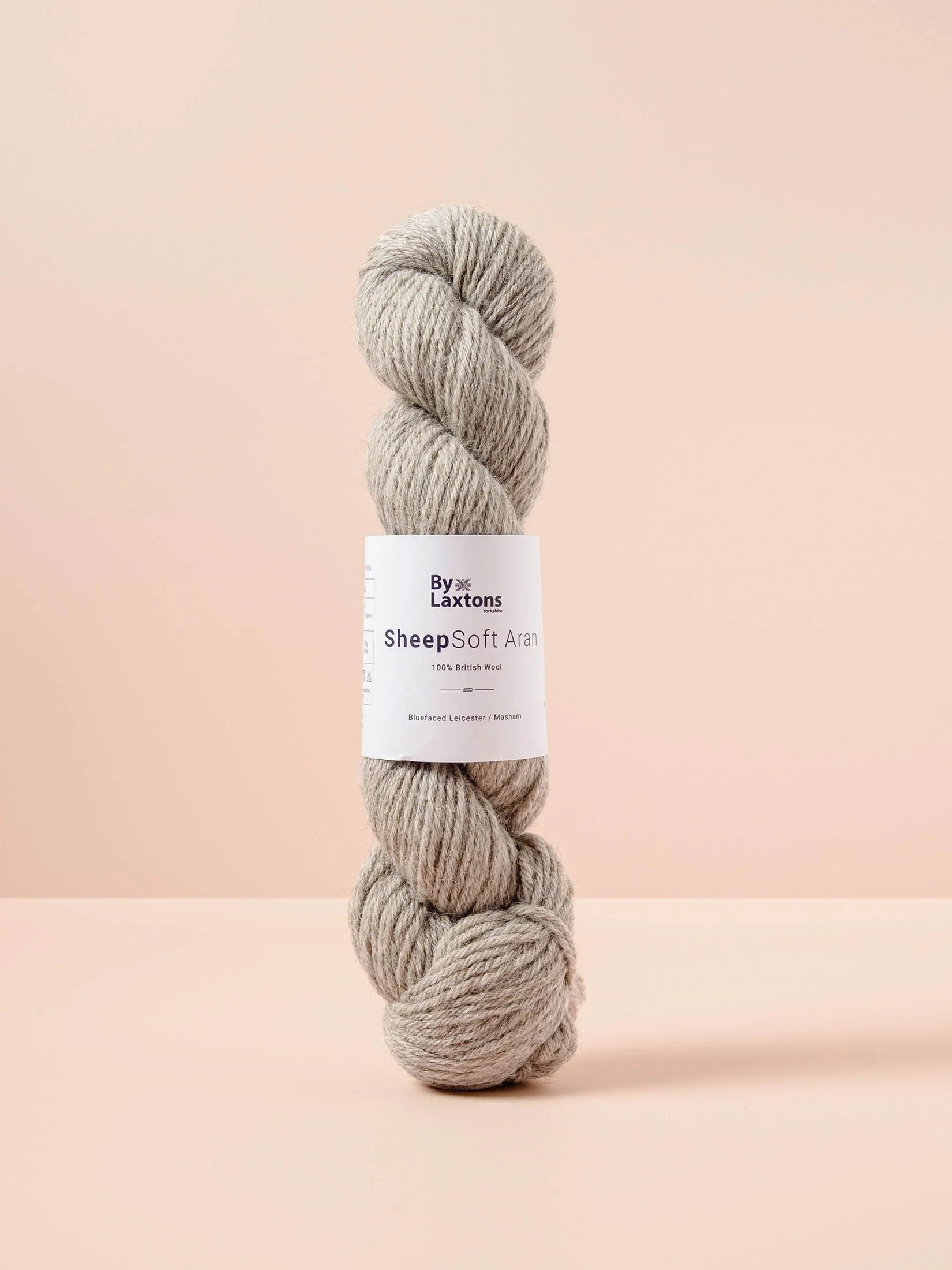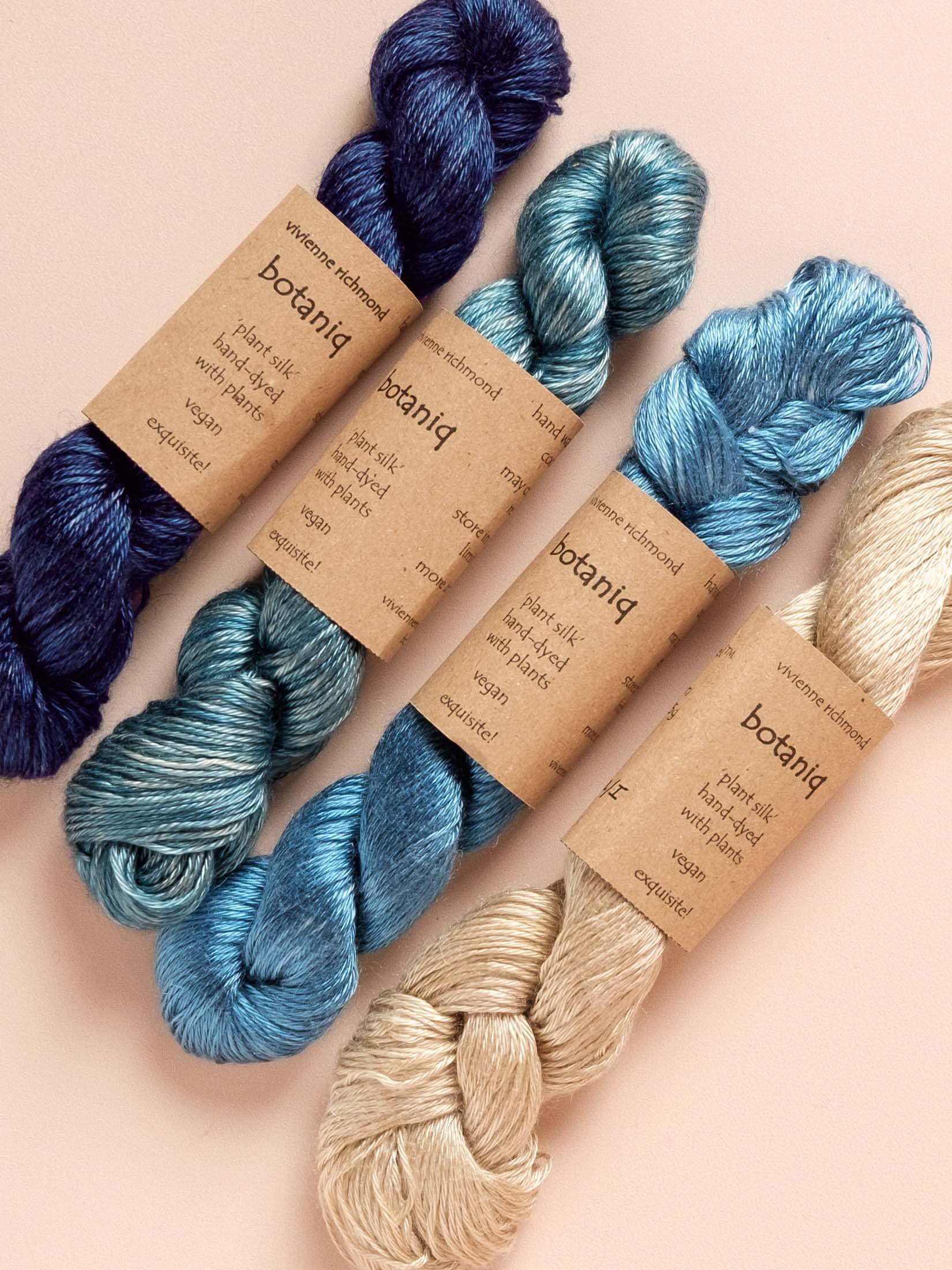A Guide to Yarn Weight
Yarn weight actually refers to the thickness of yarn, and it’s an important element to consider when planning a knitting project. Sometimes you’ll be knitting a blanket or a scarf where the exact measurements of the finished object don’t matter too much, but if you are going to be joining pieces together, or knitting a garment that you want to wear, then it’s really important that it comes out the intended size. Yarn weight also affects the type of fabric that you will end up knitting. Whether you’re aiming for a loose and airy result, or something much denser and stiffer, choosing the correct yarn weight will ensure that you achieve it.
In the UK we don’t have an ‘official’ classification system, but there are some widely understood weight categories that are used consistently by retailers, manufacturers and designers. Because of the nature of wool, there can be quite a wide variety within these categories, which means that it often isn’t as simple as just swapping one yarn for another of the same weight classification. However, the weight is certainly a good starting point when choosing yarn for a project, deciding what to knit with a particular yarn, or trying to find a suitable yarn substitution for a pattern.
Let’s look at some general information about yarn weight and how to measure it, before considering the individual weight categories and their uses.
What is a Ply?
‘Ply’ refers to the number of strands that are twisted together during the spinning process to make the yarn. So 3-ply yarn, for example, would have three separate strands all twisted together. It is normally possible to pull the yarn apart at the end to see how many plies have been used in its construction.
Historically yarn weights were named after the number of plies the yarn contained, but advances in spinning technology mean that that is no longer really the case. So yarn that is classified as 4-Ply weight may actually have fewer or more than 4 plies. Generally, more plies results in a thicker yarn, but it is also possible to have a heavier yarn made from fewer, thicker plies.
Measuring Yarn Weight
There are a few ways to measure the weight of a yarn more accurately than deciding which general category it falls into. Three of the most commonly used are wraps per inch (wpi), the number of metres per 100g, and the knitted gauge.
Wraps Per Inch
You can measure the wraps per inch of a yarn by wrapping it around a ruler, (or a knitting needle, or a specific wpi measuring gauge) and counting the number of wraps of yarn per inch. A thicker yarn will have fewer, and a thinner yarn will have more. It is normally more accurate to measure across three or four inches and then divide by the number of inches. It’s also important to make sure that the yarn isn’t too tight or too slack - normal knitting tension is fine. You can directly compare two yarns using their wpi.
Metres Per 100g
The units used will vary by country and sometimes by the weight of the ball or skein of yarn being sold (usually either 50g or 100g), and this information is usually written on the ball band or contained in the description if you are purchasing online. It is a really good way of comparing more than one yarn if you don’t have them in front of you to count the wraps per inch. If substituting one yarn for another, aim for one that has a similar number of metres per 100g.
Knitted Gauge
The number of stitches per 10cm of knitted fabric is also often written on the ball band. This is less accurate than the metres per 100g, as it depends on the needle size being used (normally given) and also the knitter. It gives a rough idea of the yarn weight, but you might find that your 10cm swatch has a looser or a tighter gauge on the same needle size than the one given. This is normal, and you can go up or down half a needle size to adjust the fabric as required. This measurement is most useful if you are starting with a ball of yarn and deciding which needles you should use for a project. Find out how to knit a gauge swatch here.
Yarn Weights
The following gives a general idea of the WPI, weight per 100g and knitted gauge of the different yarn weights, as well as suggested needle sizes and suitable projects. We’ve used the same categories that we use to organise yarn in our online shop. As always there are no rules - it’s totally fine to use a large needle size with a lightweight yarn-you’ll just end up with a looser fabric. And if you want a denser fabric, try a smaller needle size or a heavier yarn. It’s always worth playing around with needle size and yarn weight until you find a fabric that you are happy with. However if you are looking to substitute a yarn for a specific project, use the wpi and the length per 100g to guide you.
4 Ply
Also known as Sport weight or Fingering weight (US). 4-Ply yarn is suited to lightweight sweaters and tops, shawls, socks and baby clothes. It can be held double in place of a DK weight yarn.
WPI: 14-30
Metres per 100g: 260-400
Gauge: 24-38 stitches per 10cm
Recommended needle size: 3.25mm-4.5mm
Double Knit (DK)
Double Knit or Light Worsted (US) is double the weight of 4-ply. It is suitable for most garments and will knit up relatively quickly.
WPI: 11-15
Metres per 100g: 210-250
Gauge: 20-24 stitches per 10cm
Recommended needle size: 4mm-5.5mm
Learn more about DK Weight Yarn
Aran/Worsted
Worsted (US) is generally slightly thinner than Aran (UK). Worsted also refers to a method of spinning, so other yarn weights could be ‘worsted spun’. This does not refer to their weight. Suitable for heavy jumpers and blankets, and knits up quickly.
WPI: 9-12
Metres per 100g: 130-200
Gauge: 16-20 stitches per 10cm
Recommended needle size: 4mm-6.5mm
Chunky
Chunky (UK) or Bulky (US) is a heavy weight yarn that is suitable for outdoor wear, winter jumpers and oversized garments as well as blankets and cushions. It is very quick to knit.
WPI: 5-9
Metres per 100g: 40-120
Gauge: 12-16 stitches per 10cm
Recommended needle size: 5.5mm-8mm













